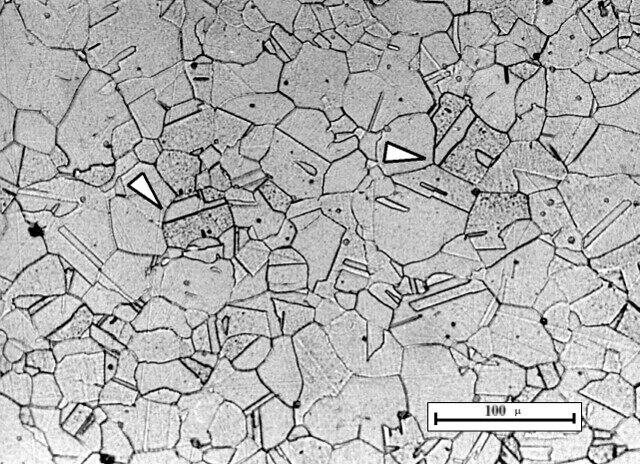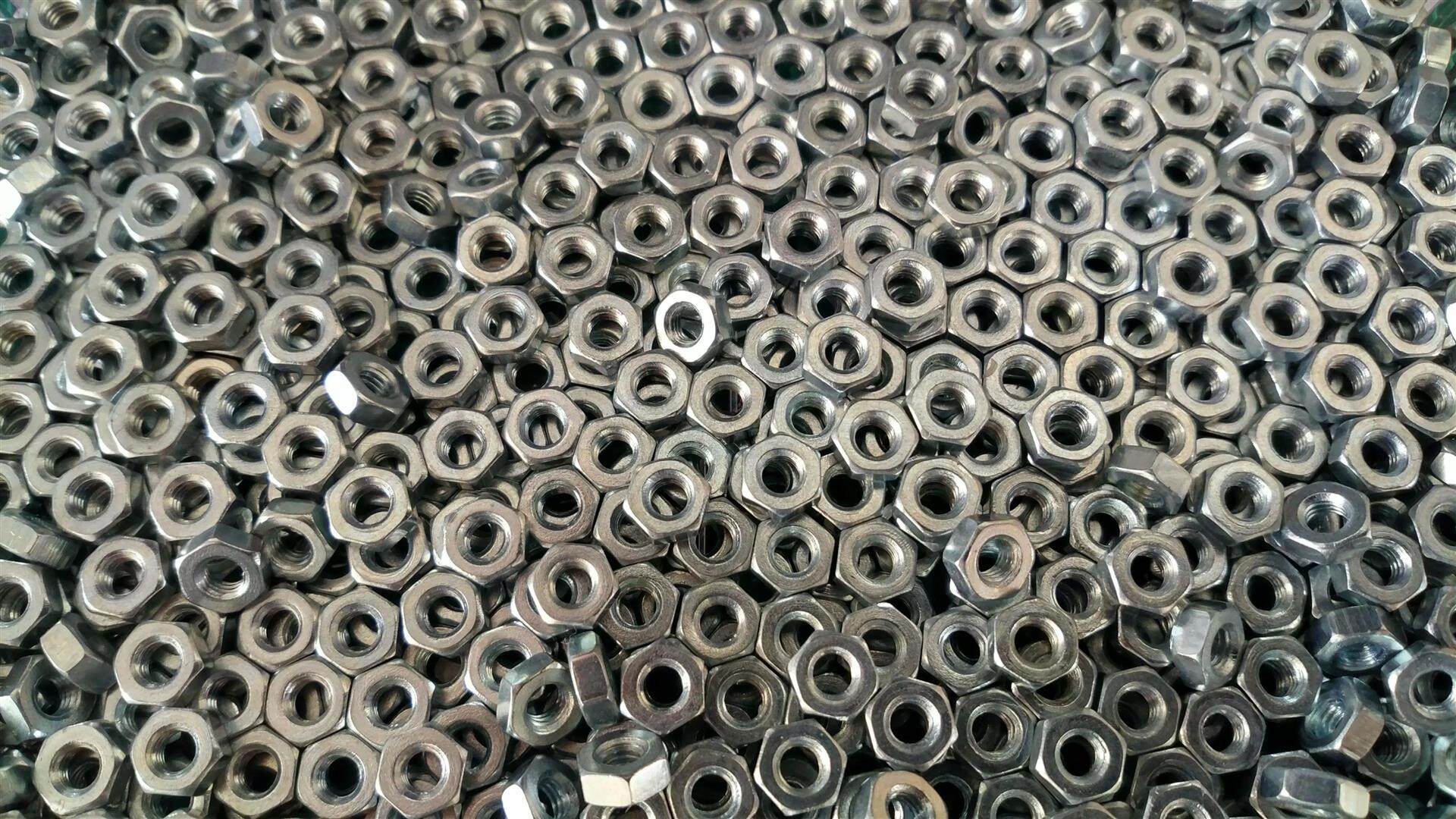5 different types of stainless steel & all Classification of stainless steel list
Stainless steel has grown into many different subcategories. According to the difference of its various metal contents, it can be divided into Austenitic stainless steel, Ferricic stainless steel, Martensitic stainless steel, Duplex stainless steel and Precipitation Hardening stainless steel.

Austenitic stainless steel contains more than 18% chromium, about 8% nickel and a small amount of molybdenum, titanium, nitrogen and other elements. This stainless steel has a good overall performance and has maximum output compared with other types, accounting for about 60% of all stainless steel production. Such steels are widely used as corrosion resistant containers and applied in scenarios where corrosion protection is required because of their great plasticity, toughness, weldability and corrosion resistance.
Ferritic stainless steel contains about 10.5% to about 27% chromium and it is almost free of nickel. Such stainless steels are excellent in corrosion resistance and oxidation resistance because of their high chromium content. But they have poor mechanical properties, therefore are used to be parts that are less stressed and require acid and oxidation resistance. In addition, this type of stainless steel has good expansion coefficient and high temperature resistance, which can be made into parts used at high temperatures.
Martensitic stainless steel contains 11.5 to 18% chromium and less than 1.2% carbon, sometimes containing some nickel. Because of their high carbon content, such stainless steels have high strength, excellent wear resistance and hardness, but poor plasticity. They can be used in areas where high mechanical properties are required.
Duplex stainless steel is a kind of stainless steel with about half of Austenite and Ferrite. Generally, at least one kind of content is more than 30%. Duplex stainless steel is formed by increasing the Cr content on the basis of 18-8 austenite or adding other ferrite elements, so that the steel has bidirectional structures of austenite and ferrite, and also saves the Ni alloy. It has certain advantages of austenite and ferrite, and makes up for some of their shortcomings. However, duplex stainless steels have lower heat resistance and a moderate temperature brittle zone, requiring a more rigorous process.
Precipitation Hardening stainless steel is formed by adding other elements to other stainless steels. Stainless steel has desirable properties by precipitation hardening, and the specific content and properties of which are related to stainless steel and its additives. Such stainless steels generally have good corrosion resistance, ductility and strength.

In addition, Society of Automotive Engineers has developed SAE steel grades based on the content of various elements, covering almost all types of stainless steel that may be used. The stainless steel numbers are as follows:
|
SAE designation |
% Cr |
% Ni |
% C |
% Mn |
% Si |
% P |
% S |
% N |
|
|
Austenitic |
|||||||||
|
201 |
16–18 |
3.5–5.5 |
0.15 |
5.5–7.5 |
0.75 |
0.06 |
0.03 |
0.25 |
|
|
202 |
17–19 |
4–6 |
0.15 |
7.5–10.0 |
0.75 |
0.06 |
0.03 |
0.25 |
|
|
205 |
16.5–18 |
1–1.75 |
0.12–0.25 |
14–15.5 |
0.75 |
0.06 |
0.03 |
0.32–0.40 |
|
|
254 |
20 |
18 |
0.02 max |
- |
- |
- |
- |
0.2 |
|
|
301 |
16–18 |
6–8 |
0.15 |
2 |
0.75 |
0.045 |
0.03 |
- |
|
|
302 |
17–19 |
8–10 |
0.15 |
2 |
0.75 |
0.045 |
0.03 |
0.1 |
|
|
302B |
17–19 |
8–10 |
0.15 |
2 |
2.0–3.0 |
0.045 |
0.03 |
- |
|
|
303 |
17–19 |
8–10 |
0.15 |
2 |
1 |
0.2 |
0.15 min |
- |
|
|
303Se |
17–19 |
8–10 |
0.15 |
2 |
1 |
0.2 |
0.06 |
- |
|
|
304 |
18–20 |
8–10.50 |
0.08 |
2 |
0.75 |
0.045 |
0.03 |
0.1 |
|
|
304L |
18–20 |
8–12 |
0.03 |
2 |
0.75 |
0.045 |
0.03 |
0.1 |
|
|
304Cu |
17–19 |
8–10 |
0.08 |
2 |
0.75 |
0.045 |
0.03 |
- |
|
|
304N |
18–20 |
8–10.50 |
0.08 |
2 |
0.75 |
0.045 |
0.03 |
0.10–0.16 |
|
|
305 |
17–19 |
10.50–13 |
0.12 |
2 |
0.75 |
0.045 |
0.03 |
- |
|
|
308 |
19–21 |
10–12 |
0.08 |
2 |
1 |
0.045 |
0.03 |
- |
|
|
309 |
22–24 |
12–15 |
0.2 |
2 |
1 |
0.045 |
0.03 |
- |
|
|
309S |
22–24 |
12–15 |
0.08 |
2 |
1 |
0.045 |
0.03 |
- |
|
|
310 |
24–26 |
19–22 |
0.25 |
2 |
1.5 |
0.045 |
0.03 |
- |
|
|
310S |
24–26 |
19–22 |
0.08 |
2 |
1.5 |
0.045 |
0.03 |
- |
|
|
314 |
23–26 |
19–22 |
0.25 |
2 |
1.5–3.0 |
0.045 |
0.03 |
- |
|
|
316 |
16–18 |
10–14 |
0.08 |
2 |
0.75 |
0.045 |
0.03 |
0.1 |
|
|
316L |
16–18 |
10–14 |
0.03 |
2 |
0.75 |
0.045 |
0.03 |
0.1 |
|
|
316F |
16–18 |
10–14 |
0.08 |
2 |
1 |
0.2 |
0.10 min |
- |
|
|
316N |
16–18 |
10–14 |
0.08 |
2 |
0.75 |
0.045 |
0.03 |
0.10–0.16 |
|
|
317 |
18–20 |
11–15 |
0.08 |
2 |
0.75 |
0.045 |
0.03 |
0.10 max |
|
|
317L |
18–20 |
11–15 |
0.03 |
2 |
0.75 |
0.045 |
0.03 |
0.10 max |
|
|
321 |
17–19 |
9–12 |
0.08 |
2 |
0.75 |
0.045 |
0.03 |
0.10 max |
|
|
329 |
23–28 |
2.5–5 |
0.08 |
2 |
0.75 |
0.04 |
0.03 |
- |
|
|
330 |
17–20 |
34–37 |
0.08 |
2 |
0.75–1.50 |
0.04 |
0.03 |
- |
|
|
347 |
17–19 |
9–13 |
0.08 |
2 |
0.75 |
0.045 |
0.03 |
- |
|
|
348 |
17–19 |
9–13 |
0.08 |
2 |
0.75 |
0.045 |
0.03 |
- |
|
|
384 |
15–17 |
17–19 |
0.08 |
2 |
1 |
0.045 |
0.03 |
- |
|
|
SAE designation |
% Cr |
% Ni |
% C |
% Mn |
% Si |
% P |
% S |
% N |
|
|
Ferritic |
|||||||||
|
405 |
11.5–14.5 |
- |
0.08 |
1 |
1 |
0.04 |
0.03 |
- |
|
|
409 |
10.5–11.75 |
0.05 |
0.08 |
1 |
1 |
0.045 |
0.03 |
- |
|
|
429 |
14–16 |
0.75 |
0.12 |
1 |
1 |
0.04 |
0.03 |
- |
|
|
430 |
16–18 |
0.75 |
0.12 |
1 |
1 |
0.04 |
0.03 |
- |
|
|
430F |
16–18 |
- |
0.12 |
1.25 |
1 |
0.06 |
0.15 min |
- |
|
|
430FSe |
16–18 |
- |
0.12 |
1.25 |
1 |
0.06 |
0.06 |
- |
|
|
434 |
16–18 |
- |
0.12 |
1 |
1 |
0.04 |
0.03 |
- |
|
|
436 |
16–18 |
- |
0.12 |
1 |
1 |
0.04 |
0.03 |
- |
|
|
442 |
18–23 |
- |
0.2 |
1 |
1 |
0.04 |
0.03 |
- |
|
|
446 |
23–27 |
0.25 |
0.2 |
1.5 |
1 |
0.04 |
0.03 |
- |
|
|
SAE designation |
% Cr |
% Ni |
% C |
% Mn |
% Si |
% P |
% S |
% N |
|
|
Martensitic |
|||||||||
|
403 |
11.5–13.0 |
0.6 |
0.15 |
1 |
0.5 |
0.04 |
0.03 |
- |
|
|
410 |
11.5–13.5 |
0.75 |
0.15 |
1 |
1 |
0.04 |
0.03 |
- |
|
|
414 |
11.5–13.5 |
1.25–2.50 |
0.15 |
1 |
1 |
0.04 |
0.03 |
- |
|
|
416 |
12–14 |
- |
0.15 |
1.25 |
1 |
0.06 |
0.15 min |
- |
|
|
416Se |
12–14 |
- |
0.15 |
1.25 |
1 |
0.06 |
0.06 |
- |
|
|
420 |
12–14 |
- |
0.15 min |
1 |
1 |
0.04 |
0.03 |
- |
|
|
420F |
12–14 |
- |
0.15 min |
1.25 |
1 |
0.06 |
0.15 min |
- |
|
|
422 |
11.0–12.5 |
0.50–1.0 |
0.20–0.25 |
0.5–1.0 |
0.5 |
0.025 |
0.025 |
- |
|
|
431 |
15–17 |
1.25–2.50 |
0.2 |
1 |
1 |
0.04 |
0.03 |
- |
|
|
440A |
16–18 |
- |
0.60–0.75 |
1 |
1 |
0.04 |
0.03 |
- |
|
|
440B |
16–18 |
- |
0.75–0.95 |
1 |
1 |
0.04 |
0.03 |
- |
|
|
440C |
16–18 |
- |
0.95–1.20 |
1 |
1 |
0.04 |
0.03 |
- |
|
|
SAE designation |
% Cr |
% Ni |
% C |
% Mn |
% Si |
% P |
% S |
% N |
|
|
Heat resisting |
|||||||||
|
501 |
4–6 |
- |
0.10 min |
1 |
1 |
0.04 |
0.03 |
- |
|
|
502 |
4–6 |
- |
0.1 |
1 |
1 |
0.04 |
0.03 |
- |
|
|
Martensitic precipitation hardening |
|||||||||
|
630 |
15-17 |
3-5 |
0.07 |
1 |
1 |
0.04 |
0.03 |
- |
|
*This form is taken from the 27th edition of Machinery's Handbook by Oberg, E. Among them, the austenite type is non-magnetic or weakly magnetic, and the martensite or ferrite is magnetic.
The actual properties of each of the different grades of stainless steel described above are different, so the scenes used are different. The root cause is the difference in elemental content. For example:
316 stainless steel contains Mo, which is more corrosion resistant than 304 stainless steel in high temperature environment. Therefore, in high temperature environments, engineers generally use parts made of 316 materials.
316 mainly reduces the Cr content and increases the Ni content and increases Mo2%~3%. Therefore, its corrosion resistance is stronger than 304, and it is suitable for use in chemical, seawater and other environments.
Therefore, when choosing stainless steel, you should pay attention to its specific grade.
Leave your comment
Also Offers


Containment Automatic Capsule Filling Machine SFK-703

Fully Automatic Dosator Capsule Filling Machine CZ-40

Our Team
As an expert in the pharmaceutical and pharmaceutical packaging industry, iPharMachine has provided solutions for hundreds of pharmaceutical and health product manufacturers for 17 years. By visiting customers, we get good reviews from our customers.
- info@ipharmachine.com
- English Español Deutsche







